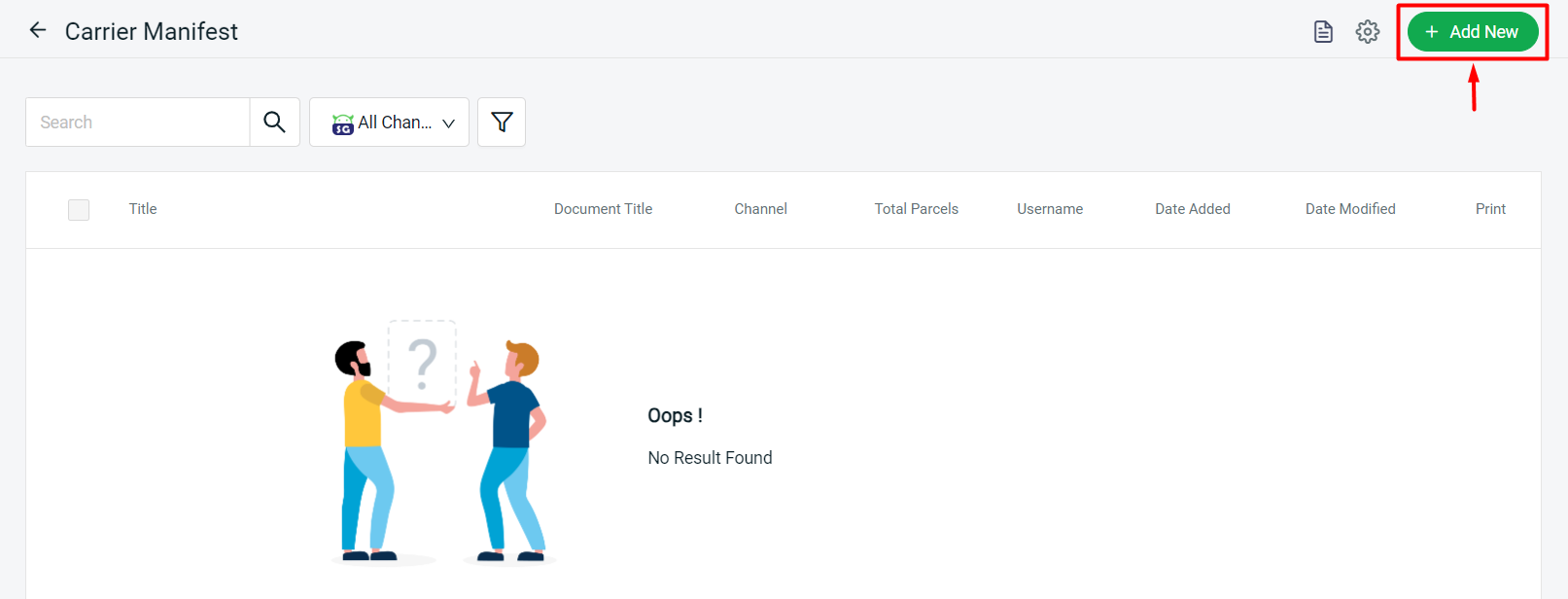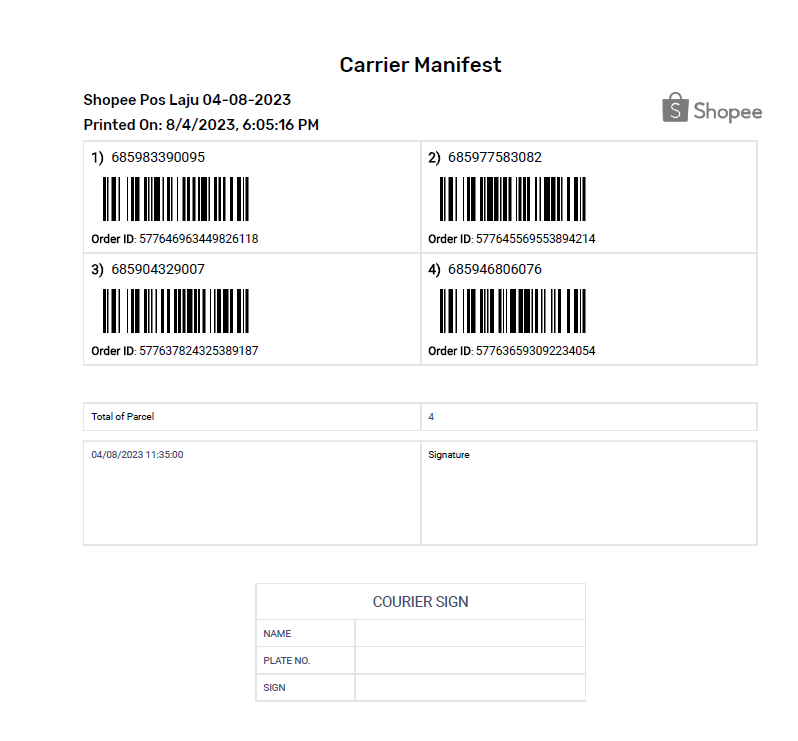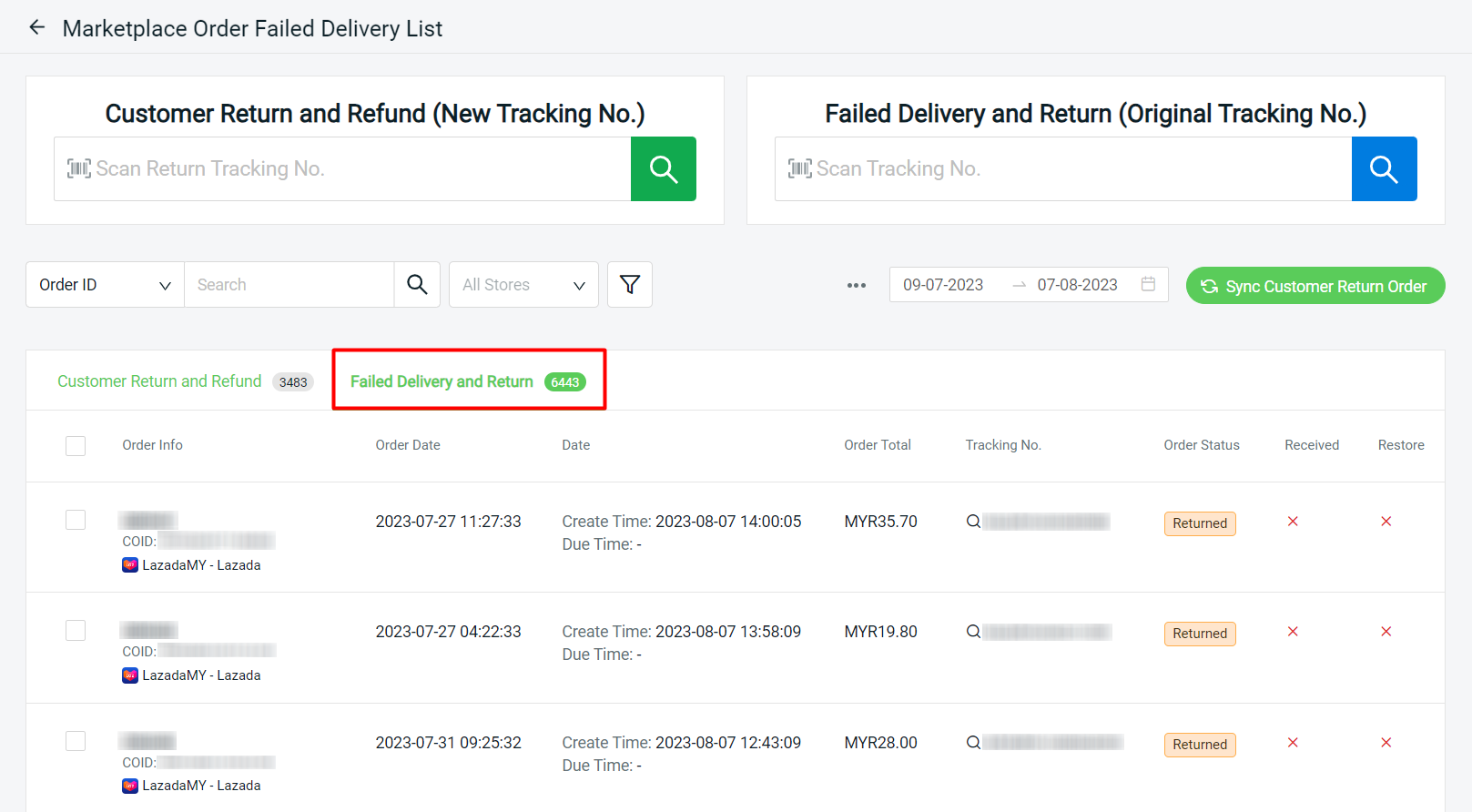1. Introduction
2. Order Fulfillment Assistant
3. Carrier Manifest
4. Marketplace Order Return Management
1. Introduction
After the order is processed, there still might have some unexpected changes, such as customers suddenly cancelling their orders. By using Order Processing Tools, such as Order Fulfillment Assistant and Carrier Manifest, you are able to cross-check the status of the orders before packing and shipping them out. Other than that, these features help you to make sure the correct items are being picked and packed to reduce customer return orders.
On the other hand, we know that sometimes customer return orders are unavoidable. Marketplace Order Return Management helps you to record your return order and you may easily restock the item’s quantity to inventory.
2. Order Fulfillment Assistant
Order Fulfillment Assistant helps you to cross-check your marketplace order status before you start the packing process. An error message will be triggered after the order has been cancelled or the wrong items have been scanned.
Step 1: Navigate to Orders > Fulfillment > Order Fulfillment Assistant.

Step 2: For the first-time user, click on the Settings icon at the top right to configure the Order Fulfillment Assistant Settings.

Step 3: Configure the General Settings.

1. Scan Order: Set the default cursor focused for order scanning. (By Tracking Number, Marketplace Order ID or Order ID)
2. Scan Item: Enable to allow the scanning of items to double-check that the correct items are picked. (By SiteGiant iSKU, SiteGiant UPC or Marketplace SKU)
3. Set "Ready To Ship" to Lazada Order: Auto update Lazada order status from "Packed" to "Ready To Ship" status when scanning the order.
4. Show Bundle Kit Items: Enable to list down the individual items in a kit.
5. Order Info Retrieved From: It is recommended to choose Marketplace as it will get the latest order information directly from marketplaces when scanning the order. If choose SiteGiant, it will retrieve the order information from SiteGiant.
6. Insert Serial Number: Enable to insert the Serial Number of the item upon scanning. You can set whether by Default (can skip any item), Optional (based on the inventory item setting) or Force All (all items must insert serial number).
7. Show Packing Note: Enable to show the packing note of the order.
8. Show Buyer Comment: Enable to show the buyer comment on the order.
9. Quick Item Fulfillment: Enable to allow bypass scanning items with multiple quantities. Choose whether it is required to scan at least 1 quantity of the item before bypassing the scanning.
10. Set "Ready To Ship" to Zalora Order: Auto update Zalora order status from "Packed" to "Ready To Ship" status when scanning the order.
Step 4: You can set the Live Monitor Display Settings to monitor the performance of the packer. (optional) > Save.

Step 5: Scan or insert the Tracking Number on Shipping Label/ Marketplace Order ID/ Order ID.

Step 6: The order details and products will be shown > scan the item SKU/ UPC/ iSKU based on your settings > scan the serial number if it is enabled in the settings.

Step 7: A warning message will appear with a beep sound if the order is scanned before > you may check the Scan History for the scan record.

Step 8: If the order status is abnormal (e.g. cancelled), the warning message will be shown.

Step 9: You may view the Order Fulfillment Assistant Report by clicking on the Reporting > click into the user report to view the details.

Step 10: You can also track the staff performance in real time using Live Monitor. Click on the View Live Report > choose whether by Single View or Combo View.

3. Carrier Manifest
This is the 2nd layer of cross-checking your marketplace order status before shipping. An error notification will pop up if there is any duplicated or cancelled order being scanned. In this way, you can be safe from delivering unnecessary orders and minimize your business loss. Furthermore, Carrier Manifest lets you keep a record of your shipped order based on shipping providers and dates, which you can easily retrieve for future reference if needed.
Step 1: Navigate to Orders > Fulfillment > Carrier Manifest.

Step 2: Click on the Setting icon to configure the settings.

Step 3: Configure the settings based on your preferences > Save.

1. Show Marketplace Status: When enabled, the order status like Ready To Ship, Completed or Cancelled would be shown upon scanning.
2. Set "Ready to Ship" to Lazada Orders: Auto update Lazada order status from "Packed" to "Ready To Ship" status when scanning the order.
3. Set "Ready to Ship" to Zalora Orders: Auto update Zalora order status from "Packed" to "Ready To Ship" status when scanning the order.
4. Show Tracking Number Barcode on Document: Choose whether to show Barcode or QR Code beside the tracking number when printing out the Carrier Manifest.
5. Display Courier Sign on Document: Add a signature section under the Carrier Manifest for the courier person to sign upon handling the parcels.
Step 4: Click on + Add New to create a new Carrier Manifest.

Step 5: Fill in the Basic Info and click on Start Scan.

Step 6: The following section will appear and you may start to scan the tracking number on your shipping label in the column. If you don’t have a barcode scanner, you can also enable Typing to type the tracking number manually. Enable Delete if you wish to remove the scanned tracking number from the list.

Step 7: Once you scan or type the tracking number, the tracking number will be recorded and the status of the order will be displayed.

Step 8: When the order is duplicated, a warning notification will pop up.

Step 9: If the order has already been cancelled, a warning notification will pop up.

Step 10: If the scanned tracking number does not belong to the selected courier company, a warning notification will pop up. This ensures the parcel is not handed over to the incorrect courier company.

Step 11: Once done with all the scanning, you may click on Print to print out the carrier manifest.

Step 12: The template below will be previewed and you may proceed to print it out. You may request the courier person to sign in the Courier Sign below as proof of parcel handling.

Step 13: You may also Export the carrier manifest to Excel for reference and record. (optional)

4. Marketplace Order Return Management
Sometimes, you may face a problem whereby the product is delivered to the customer, however, due to some unexpected circumstances, the customers might request a return and refund of the order. Another situation is, the parcel might fail to deliver to the customer due to some reasons, and you are unsure whether the parcel has been returned to you. With Marketplace Order Return Management, you can systematically manage your order returns and restock the items back into your inventory.
Step 1: Go to Order > Marketplace Order Return from the sidebar menu.

Step 2: Filter the date (by default is 30 days from the current date) > click on the Sync Customer Return Order button to retrieve the marketplace return orders.

Step 3: Sync Summary will pop up and you can see how many orders have been synced back from each marketplace.

Step 4: The orders will be listed under the Customer Return and Refund tab.

Step 5: In the case of Failed Delivery and Return, you will need to scan or insert the Original Tracking Number in the Failed Delivery and Return section to retrieve the order.

?Note: Failed Delivery orders required scanning or inserting tracking numbers into the interface manually due to API limitations. This is because the API provided by marketplaces only allows the system to capture Customer Return orders.
Step 6: The scanned or inserted order will be listed and recorded down.

Step 7: When you received the return parcel from the customer or the courier, you can check the Return parcel has been received column for your record.

Step 8: You may add Parcel Received Date and Remark by clicking on Edit Note under the Notes section > Save.

Step 9: Orders that are already marked received will be marked with a green tick under the Received column.

Step 10: If the item returned by the customer is in good condition and you decided to restore the item to inventory, you may click on the Return SN > under Returned Item column, insert the item quantity > Save Restored Item.

Step 11: You will be redirected to the Stock In page > fill in the Stock In Details > click on the Save button.

Step 12: The orders that already restore to inventory will be marked with a green tick.

Step 13: When the order is shipped and fulfilled, the order status in SiteGiant will be updated to Completed, which will be the last status of the order. When the order is returned, the order status will not automatically update to marketplace status. Thus, you can manually mark the order as the Returned status for your record.

Step 14: The order status on the All Orders page will change from Completed to Returned.

